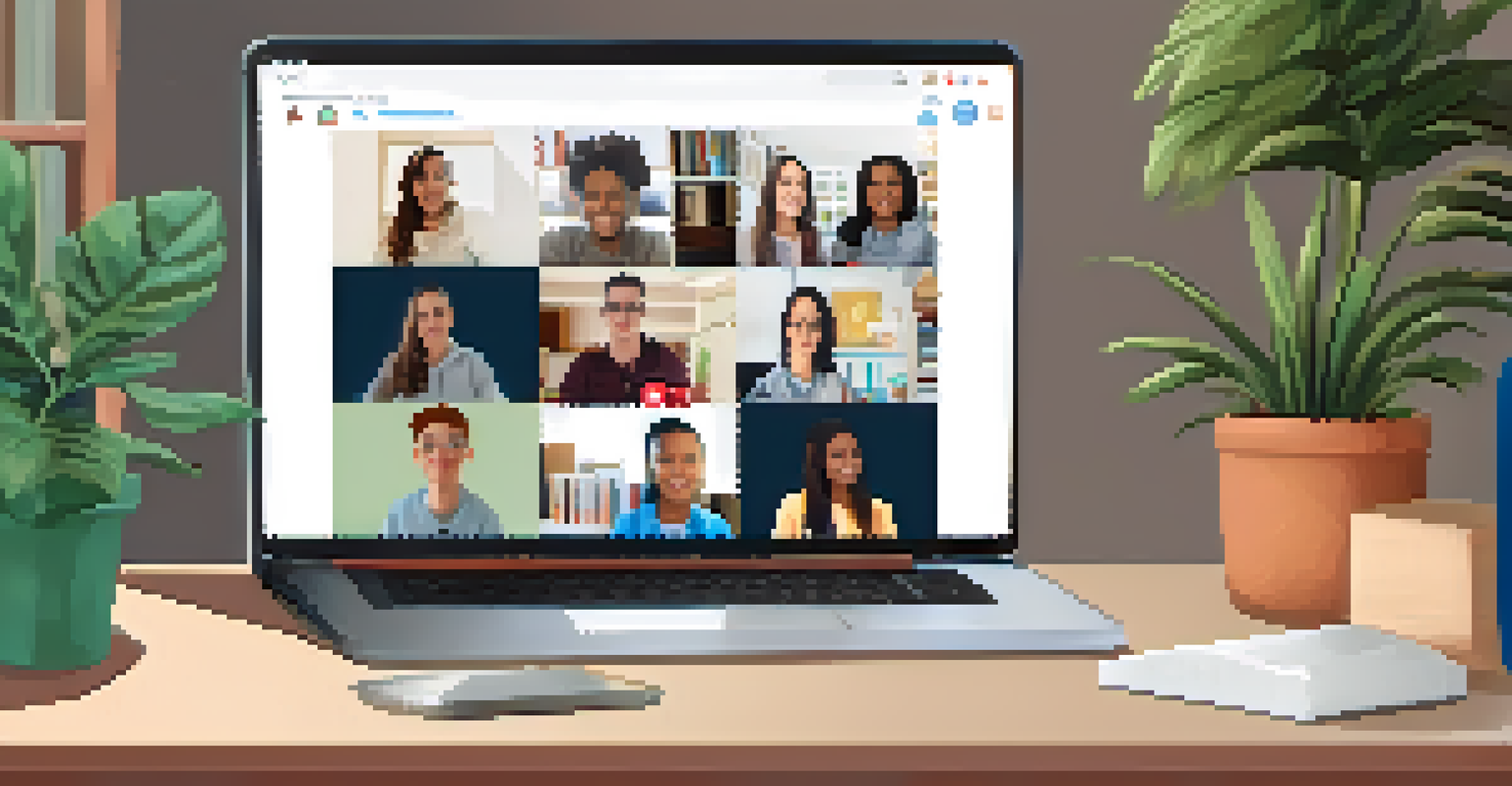Engaging Diverse Learners in Remote Education Contexts

Understanding the Importance of Diversity in Learning
Diversity in the classroom encompasses a wide range of backgrounds, learning styles, and experiences. Each learner brings unique perspectives that enrich discussions and enhance the learning process. Recognizing and valuing this diversity is crucial, especially in remote education settings where personal connections can be challenging to establish.
Diversity is not a reason for division; it is a reason for connection.
When educators embrace diversity, they not only foster an inclusive environment but also promote equity. This means ensuring that all students feel valued and have access to the same resources and opportunities. In a remote context, this can involve utilizing various teaching methods to cater to different learning preferences.
Ultimately, understanding the importance of diversity helps create a more engaging and effective remote learning experience. By focusing on the strengths of each learner, educators can craft lessons that resonate and inspire participation, leading to better educational outcomes.
Utilizing Technology to Enhance Engagement
Technology plays a pivotal role in remote education, offering tools that can captivate and involve students. Platforms like video conferencing, interactive quizzes, and discussion forums can make learning more dynamic and enjoyable. By leveraging these tools, educators can create a sense of community that transcends physical barriers.

Incorporating multimedia resources—such as videos, podcasts, and infographics—can also cater to different learning styles. For instance, visual learners may benefit from videos, while auditory learners might prefer podcasts. This variety helps maintain interest and encourages all students to engage with the material.
Value Diversity in Learning
Embracing diversity enriches the learning experience and promotes inclusivity in remote education.
Moreover, technology can facilitate personalized learning experiences. Through adaptive learning software, educators can tailor content to meet individual needs, ensuring that every student receives the appropriate level of support and challenge.
Creating an Inclusive Curriculum
A well-rounded curriculum is essential for engaging diverse learners. This involves integrating diverse perspectives and materials that reflect the backgrounds of all students. By including authors from various cultures or addressing global issues, educators can make the content more relatable and stimulating.
Technology will never replace great teachers, but technology in the hands of great teachers is transformational.
Additionally, providing choices in assignments can empower students to explore topics that interest them. For example, allowing learners to choose between a traditional essay and a creative project can cater to different strengths and preferences. This approach not only enhances engagement but also promotes ownership of learning.
Incorporating culturally relevant pedagogy helps bridge gaps and fosters a sense of belonging among students. When learners see themselves represented in the curriculum, they are more likely to feel connected and motivated to participate actively.
Fostering a Supportive Learning Environment
Building a supportive learning environment is vital for remote education success. This includes establishing clear communication channels where students feel safe voicing their concerns or asking questions. Regular check-ins can help gauge student well-being and academic progress.
Encouraging collaboration through group projects or peer reviews can also create a sense of community. When learners work together, they not only share knowledge but also build relationships that enhance their educational experience. This collaborative spirit is particularly important in remote learning, where isolation can be a challenge.
Leverage Technology for Engagement
Utilizing various technological tools can enhance student engagement and foster community in virtual classrooms.
Moreover, providing constructive feedback fosters a growth mindset. When students receive encouragement and guidance on their work, they are more likely to take risks and engage deeply with the learning process.
Emphasizing Social-Emotional Learning (SEL)
Social-emotional learning (SEL) is crucial in engaging diverse learners, especially in remote contexts. SEL helps students develop skills like empathy, self-regulation, and effective communication. By incorporating SEL into the curriculum, educators can support the holistic development of their students.
Activities such as mindfulness exercises or group discussions about emotions can enhance emotional intelligence among learners. These practices not only improve classroom dynamics but also empower students to manage stress and anxiety, which can be heightened in remote settings.
By prioritizing SEL, educators create a nurturing atmosphere where students feel valued and understood. This supportive environment fosters engagement and encourages learners to participate actively, knowing that their emotional health is prioritized.
Encouraging Student Agency and Voice
Encouraging student agency means giving learners a voice in their education. When students feel they have a say in their learning process, they are more likely to engage and invest in their education. This can involve soliciting feedback on course content or allowing students to set personal learning goals.
Creating spaces for student-led discussions or projects empowers individuals to take ownership of their learning. This not only boosts confidence but also fosters critical thinking and problem-solving skills. Students learn to advocate for themselves and collaborate effectively with their peers.
Foster Student Agency and Voice
Encouraging student agency boosts motivation and investment in learning by giving learners a voice in their education.
Ultimately, promoting student agency enhances motivation and enthusiasm for learning. When students feel their contributions matter, they are more likely to participate actively and positively influence their educational experience.
Assessing and Reflecting on Engagement Strategies
Regular assessment of engagement strategies is essential for continuous improvement. Educators should evaluate what works and what doesn’t, using student feedback and performance data to guide their adjustments. This reflective practice helps refine teaching methods and ensures they meet the needs of diverse learners.
Implementing formative assessments, such as quick polls or exit tickets, can provide insights into student understanding and engagement levels. These tools allow educators to make real-time adjustments to their teaching approaches, ensuring that all students are aligned with the learning objectives.

Lastly, fostering a culture of reflection among students encourages them to evaluate their own learning experiences. When learners take time to consider their engagement and progress, they become more self-aware and proactive in their educational journeys.